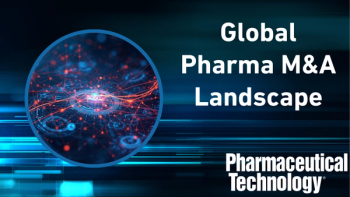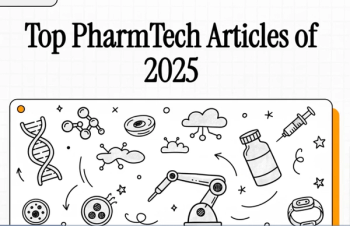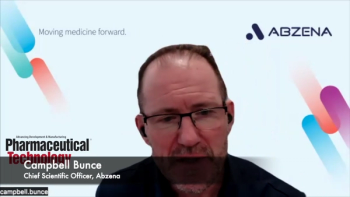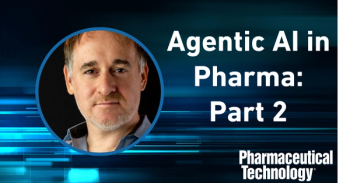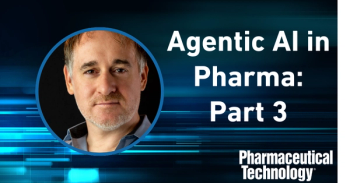
- Pharmaceutical Technology, March 2022 Issue
- Volume 46
- Issue 3
- Pages: 8
Locating Logic in Pharma Manufacturing
Reducing US dependency on overseas pharma manufacturing may prove critical in navigating supply chain disruptions.
In April 2020, a clarion call by Outsourced Pharma set a major goal in “A Declaration of Drug Independence.” This call sought to “... dedicate ourselves to the goal of reducing US dependency on foreign sources for drug materials, intermediates, substances, and finished products to 50% or less by the end of the year 2025” (1).
In hindsight, this looks prescient, especially as war in Europe now joins the pandemic to threaten access to essential medicines. What looks less than prescient was the frequently quoted response in May 2020 from the Pharmaceutical Research Manufacturers of America (PhRMA) whose core reply amounted to, “But now is not the time for sweeping changes to the pharmaceutical supply chain that could cause disruptions” (2). Even taken in context, it’s a paradoxical statement.
Eric Edwards, CEO of Phlow, is focused to rebuild the critical industrial base that’s been lost over decades, “to be able to manufacture these essential medicines end to end, from chemistry all the way to the finished dosage form so that we can get it to the patients at the bedside.” Phlow emphasizes continuous manufacturing processes to “allow chemical reactions to run on a much smaller scale, over and over again, until an entire volume of an active pharmaceutical ingredient is produced, [which] has significantly lower labor requirements [as it’s highly automated]. Then you have to get it into that finished dosage form, and we’re starting by focusing on sterile injectable drugs. The reason we’re focusing on sterile injectable drugs initially is because the majority of drug shortages in America are sterile injectables” (3).
There are still reasons to hold on to optimism. Various aspects of continuous flow manufacturing, now adopted at higher rates, allow for increased production while maintaining reasonable cost conditions. There have also been investments made on national strategies, from BARDA and BioMADE and with genuine leadership shown from the National Institutes of Health, National Institute of Standards and Technology, and FDA. But using all our logic while avoiding half measures will be required to get close to the outlined goal. One of the upsides of being a conservative industry should, theoretically, have been holding on to control more firmly.
Our exciting new podcast series Drug Solutions explores this topic in depth this March through a lively discussion with Dr. Fernando J. Muzzio, Distin- guished Professor, Chemical and Biochemical Engineering, Rutgers Univer- sity and Frederic Kahn, VP Sales, Wavelength Pharmaceticals. Both are well respected from many years of excellent and devoted service to our industry.
References
1. Louis Garguilo, “Sign the '50 by 25' Declaration of Drug Independence,” Outsourced Pharma, April 2, 2020.
2. Nicole Longo, “Executive Order Threatens R&D When We Need it Most to Fight COVID-19,” Blog Post, PhRMA, catalyst.phrma.org, July 30, 2020.
3. T.Giddens, “The Phlow of Things,” RichmondMag, Feb.5, 2021.
Article Details
Pharmaceutical Technology
Vol. 46, No. 8
March 2022
Page: 10
Citation
When referring to this article, please cite it as M. Hennessy, “Locating Logic in Pharma Manufacturing,” Pharmaceutical Technology, 46 (3) 2022.
About the Author
Mike Hennessy Jr. is the President and CEO of MJH Life Sciences.
Articles in this issue
almost 4 years ago
The Shape of Dosage Formsalmost 4 years ago
Successfully Accelerating Formulation Strategiesalmost 4 years ago
Process Performance as a Means of Quality Managementalmost 4 years ago
The State of Phage Therapyalmost 4 years ago
Troubleshooting Using Predictive Maintenancealmost 4 years ago
A New Route to Pharma GDP Compliance and Standardizationalmost 4 years ago
Empowering Protein Characterizationalmost 4 years ago
Cold Comfort for Bio/Pharmaalmost 4 years ago
Selecting and Optimizing the Right Manufacturing Partneralmost 4 years ago
Standing in SolidarityNewsletter
Get the essential updates shaping the future of pharma manufacturing and compliance—subscribe today to Pharmaceutical Technology and never miss a breakthrough.

